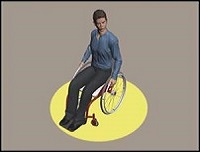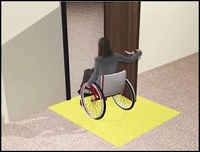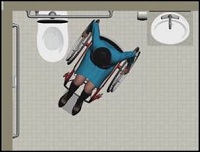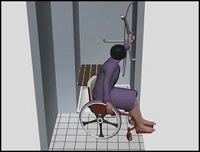Construction Codes
now browsing by category
Residential Fire Sprinkler Systems may be required in New Jersey
A bill has been introduced in the New Jersey Assembly that would require the installation of residential sprinkler systems in all new one and two family homes – except manufactured homes, homes that are part of a development plan or homes that are not connected to a public water supply system. Although its caption states that the requirement is for new single and two family dwellings, it appears that bill A1570 will also require that a sprinkler system be installed when there is a change of occupancy.
The New Jersey State League of Municipalities (NJSLOM) is planning to oppose this legislation; although it is generally supported by code enforcement professionals. The opposition is based upon the premise that government imposition of additional costs on residential property owners or potential property owners is bad. The supporters claim that the systems will save lives and protect property and lower insurance premiums. While none of us should argue about safer housing, the question that remains is “How much safety can we afford?”
It stands to reason that the most cost effective design and installation of a residential sprinkler system may be achieved when the home is being constructed. The water service can be sized properly and the pipes can be placed in the wall cavity before it is closed up. The costs to retrofit a sprinkler system in an existing home are much more variable. For example, Will the water service need to be upgraded? How much will the building be disturbed to place the pipes in the walls and repair the finishes? How much more labor will it take to perform the installation in confined spaces?
A report entitled Home Fire Sprinkler Cost Assessment, prepared in 2008 by the Fire Protection Research Foundation cites an average cost of $1.61 per square foot to install a residential fire sprinkler system in a new home on a public water service. The cost for installation of a system in the test home on a well was more than twice the price. In 1990, the Phase II Fire Sprinkler Retrofit Demonstration Project, sponsored by the Federal Emergency Management Agency and the United States Fire Administration, developed an average cost of $3.17 per square foot to install a residential fire sprinkler system in an existing single family home. With this very rough comparison, it appears that the cost of installing a residential sprinkler system in an existing one or two family dwelling is roughly twice the cost of putting it in a new home.
Bill 1570 exempts residences that rely on a well for their potable water supply, from the requirement to install sprinkler systems in one and two family homes. It seems unlikely that these homes are inherently safer – after all, won’t the fire department need to bring the water with them if such a home catches fire? It must be that the increased cost of this type of system is simply too much for the government to impose on the property owner.
Why then does the bill require installation of sprinkler systems in existing homes, when they are sold, or simply when the occupants change? The cost of doing so is similar to that of installing a sprinkler in a home with a well.
Why are homes that are part of a development plan exempted from the requirement? It’s understandable to exempt homes for which applications for building permits have been issued. Why exempt those that are still in the design process?
The bill requires that a separate water meter be provided to measure water usage for fire protection. This will result in a separate charge to the homeowner for the additional meter. A quick check of one New Jersey water provider showed a service charge of $25 per month for a one inch meter, even if no water flowed through it. Of course, the hope is that no water will ever need to flow through it. This fee alone is likely to offset any reduction in home insurance premiums.
It is hard to put a price tag on the increased safety afforded to the occupants of homes with residential sprinkler systems. At this time, however, it’s hard enough for people to sell their homes without losing money. I believe requiring the installation of a sprinkler system in an existing home is too much to ask.
The author, Carl E. Peters is one of fewer than 10 people licensed by the State of New Jersey as a Professional Engineer, Professional Land Surveyor, Professional Planner, Construction Official, Building Subcode Official and Plumbing Subcode Official. He is also a Certified Municipal Engineer and Mediator and founder of Carl E. Peters, LLC





 D5 Creation
D5 Creation